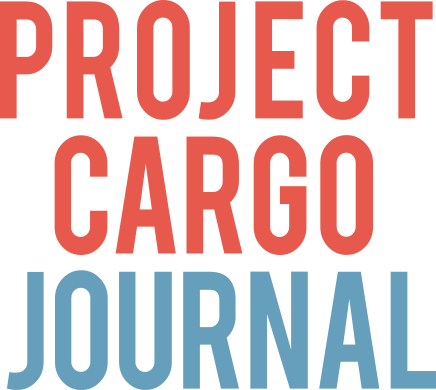In 2023, Chinese container manufacturer Singamas experienced a significant decline in revenue, dropping by 50.7% to USD 382.5 million compared to the previous year. Furthermore, the company aims to increase revenue through leasing rather than relying primarily on box sales.
According to Singamas’ 2023 annual results published last week, “during the latest financial year, the operating environment has been difficult owing to high inflation, interest rate hikes by the world’s central banks, and various geopolitical tensions. With global trade volume underperforming, the demand for dry freight containers was affected, with average selling price (“ASP”) maintaining a downward trajectory.”
Singamas, the world’s fourth-largest container manufacturer, continues: “For the Group, our specialised container business continued to grow healthily, particularly for the energy storage system (“ESS”) segment, thus testifying to the effectiveness of our diversified business model in helping mitigate the impact of dry freight container market volatility. In addition, we have been expanding the container leasing business to better serve our customers – allowing them to have the additional option of leasing on top of direct purchasing, and to capitalise on synergies with the Group’s manufacturing operation. While fully prepared to face market challenges adaptively and flexibly, we will be proactively enhancing our business model to boost profitability.”
“For the year ended 31 December 2023, the Group’s total consolidated revenue was USD 382,470,000 (2022: USD 776,455,000). Consolidated profit attributable to owners of the Company was USD 19,438,000 (2022: USD 46,340,000). The decline in revenue and ASP was attributed to a slump in demand for dry freight containers in the wake of overproduction by the industry in 2021, compounded by the aforementioned weak global trade which directly impacted gross profit margins. Basic earnings per share were 0.82 cents (2022: 1.92 cents), while cash and bank deposits stood at USD 300,963,000 (2022: USD 369,770,000).”
Manufacturing and leasing
Regarding the container manufacturing and leasing, Singamas states: “The manufacturing and leasing operation recorded revenue of USD 354,983,000 as of 31 December 2023 (2022: USD 748,847,000), which accounted for 93% (2022: 96%) of the Group’s total revenue. Segment profit before taxation and non-controlling interests was USD 19,495,000 (2022: USD 84,272,000). During the review year, the total sales volume of our manufacturing operation was approximately 106,000 twenty-foot equivalent units (TEUs) (2022: 242,000 TEUs) of dry freight and ISO-specialised containers. The ASP of 20’ dry freight containers fell to USD 2,075 (2022: US$2,836).”
“On dry freight containers, total production volume was dropped by approximately 50%. Dry freight containers and specialised containers (including customised containers) accounted for 53% and 47% of segment revenue (2022: 82% dry freight, 18% specialised) respectively. Given the lower demand for the former, we have directed greater focus on controlling costs at the Group’s dry freight container factories. Specialised containers have enjoyed healthy uptake both locally and internationally.”
Singamas adds: “In particular, ESS containers have outperformed; achieving an increase of over 170% in overall sales revenue compared with 2022. On the leasing of dry freight container business, we have witnessed healthy and significant growth in 2023. This has helped generate synergy with the manufacturing operation and enhanced overall margin.”
“As our existing manufacturing facilities allow for more flexible production and timely delivery of containers to our leasing customers, the Group can better seize relevant opportunities that arise in the market. Consequently, we will be able to derive relatively stable revenue in the future as leasing arrangements with customers are long-term, ranging from three to over 10 years.”
“We believe that the leasing operation will serve as a potential growth driver in the long run, we will invest more resources in developing this business moving forward.”
Logistics services
As for the logistics part of the Group, Singamas comments: “Our logistics services were performing well during the review year, generating revenue of USD 27,487,000 (2022: USD 27,608,000) and a segment profit before taxation and non-controlling interests of USD 8,147,000 (2022: USD 5,653,000).”
“As of 31 December 2023, the logistics operation handled approximately 704,000 TEUs (2022: 703,000 TEUs) of containers and repaired 133,000 TEUs (2022: 119,000 TEUs), with average daily container storage reaching 23,000 TEUs (2022: 21,000 TEUs).”
“To encourage the ongoing development of the logistics services business, we will review its operations to increase efficiency and bolster its business portfolio. Already, we have plans in place for strengthening the management team, optimising its business model and enhancing profitability,” Hong Kong-listed Singamas states in its 2023 financial report.
Prospects
Referring to the forthcoming market developments, Singamas comments: “According to the World Bank, global growth is projected to slow for the third consecutive year, falling from 2.6% in 2023 to 2.4% in 2024. Concerning the outlook for the dry freight container industry, its performance will depend in part on the recovery of global trade. Further stimulus will come from new vessel deliveries in 2024, which will spur new container orders.”
“However, overcapacity remains a concern for the dry freight container market. As for specialised containers, demand is anticipated to grow robustly, particularly for ESS containers that are associated with the renewable energy sector. As for the Group, our focus will be on areas of green energy, data equipment, housing, transportation solutions, etc.”
“In particular, we will dedicate greater resources to developing the ESS segment, which will include expanding production capacity and adding more overseas sales offices. We will continue exploring business opportunities outside conventional manufacturing to diversify the Group’s business operations and expand income streams,” Singamas concludes.
You just read one of our articles for free
To continue reading, subscribe to WorldCargo News
By subscribing you will have:
- Access to all regular and exclusive content
- Discount on selected events
- Full access to the entire digital archive
- 10x per year Digital Magazine
SUBSCRIBE or, if you are already a member Log In
Having problems logging in? Call +31(0)10 280 1000 or send an email to customerdesk@worldcargonews.com.




